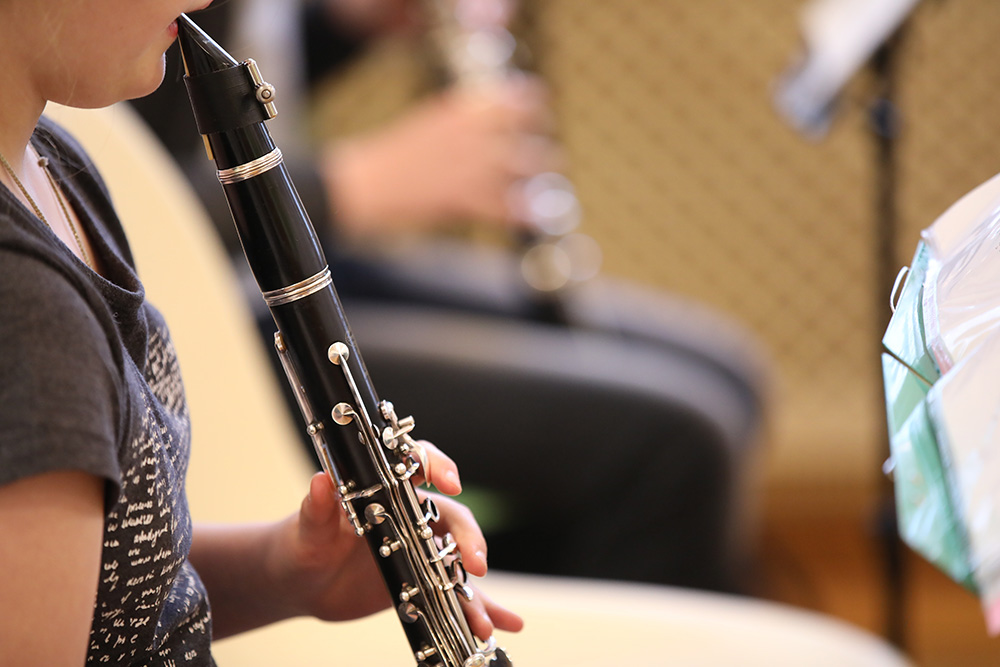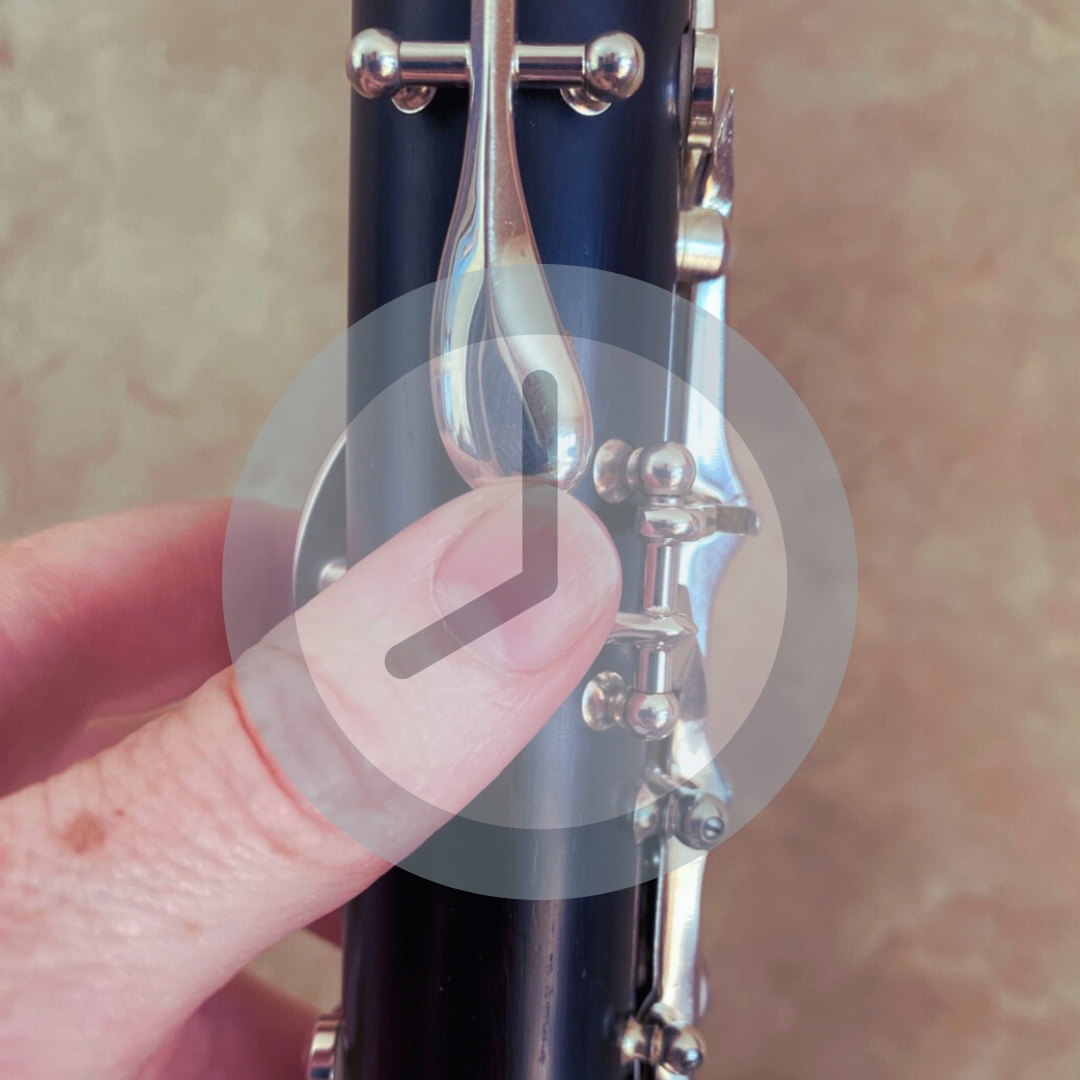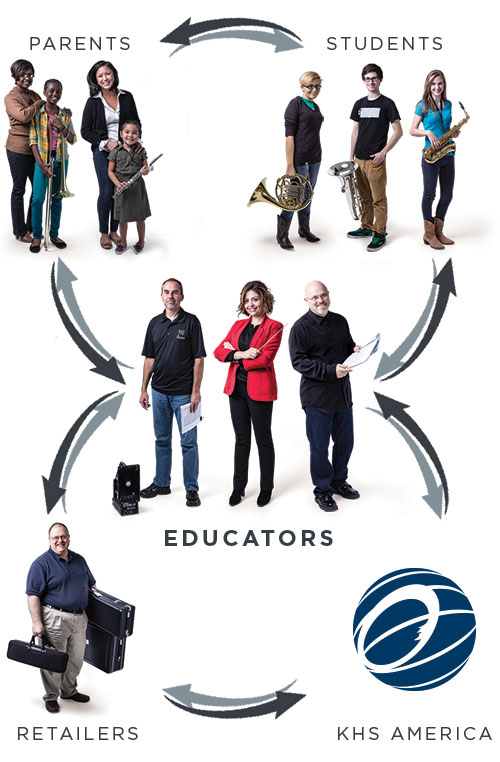Teaching students to play “over the break” doesn’t need to be overwhelming. Actually, we should probably avoid using the term altogether, and teach these notes just like any new set of fingerings. With a solid foundation in the lower register, they’ll be ready to tackle the upper register with confidence.
Lesson Plan Overview
- Play a segment of familiar tune in the lower register
- Learn correct thumb position for the register key
- Play the same segment in the upper register
- Learn the note names and play the new version of the familiar tune
Download your free printable guide to use with your students
Before Playing Over The Break, Your Students Should
- Be able to produce a full, strong sound in the lower register with a great embouchure. Encourage them to hold their tongues high and back in their mouth, as if saying, “eeee.”
- Feel comfortable playing down to a low F, ensuring their fingers fully cover the tone holes.
When clarinet students are ready, I encourage you to introduce the upper register from the top down, rather than from the bottom up. Here’s my approach:
Make sure their thumbs are at the 8:00 position so they can just catch only the tip of the register key. Demonstrate this for them first, so they can hear how it should sound and see what their thumb position should look like. You may need to remind students to cover the thumb hole while pressing the register key. Practice this a few times.
Next, demonstrate the beginning of “Hot Cross Buns” in the upper register so students can hear how it should sound. Have them play the beginning again, this time pressing the register key to shift into the upper register. Focus on playing by ear, without worrying about naming the new notes. Repeat this process a few times.
Conclusion
By breaking down the process into manageable steps, you can help beginner clarinetists approach playing over the break with confidence. Starting with a familiar tune, using the register key correctly, and reinforcing music literacy through singing and fingering equips them with the tools they need to succeed. With patience and practice, they’ll soon play smoothly between registers.
Happy Clarineting!
AMY CHAMBERS is the founder of The Music Chambers at clarinetgeek.com, where she teaches clarinet and bass clarinet lessons online and in-person in the Memphis area.
She also loves helping other teachers grow their studios through her Music Studio Kickstart course. As a Jupiter Music Educational Artist, Amy creates educational content and teaches and performs at clinics across the MidSouth.
When she’s not teaching, you’ll find her playing bass clarinet with the Memphis Wind Symphony, subbing with the Memphis Symphony Orchestra, and performing with various wind ensembles. Connect with her at clarinetgeek.com and on social media @themusicchambers.
The content of this Blog article or Banded Story is the intellectual property of the author(s) and cannot be duplicated without the permission of KHS America and/or the author(s). Standard copyright rules apply.








 We look forward to the evolution of this exciting program, and welcome feedback on how we can further enhance the work that you do in music education.
We are excited to offer your program the opportunity to join the KHS America Academic Alliance today.
We look forward to the evolution of this exciting program, and welcome feedback on how we can further enhance the work that you do in music education.
We are excited to offer your program the opportunity to join the KHS America Academic Alliance today.